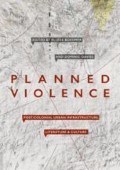Abstract
In ‘The Slaughterhouse of Literature’, Franco Moretti argues that literary devices such as clues develop under the simultaneous pressure of external factors such as advances in forensic science, and internal ones like the ‘morphological circle of virtue’ these devices create by making every part of a narrative interesting and significant. In this chapter, I will critically examine Moretti’s claims by proposing a relationship between the urban development (an ‘external’ factor) during the global nineteenth-century and the ways in which devices such as clues were used in detective fiction written in the ‘core’ and ‘semi-peripheral’ zones of the world-system. By comparing the stories written by Arthur Conan Doyle and Priyanath Mukherjee, I will argue that the differences and similarities in the nature and use of clues point to the singular, unequal, and uneven nature of modernity. The ‘morphological circle of virtue’ created by such narratives may in the final instance then depend on the degree to which they register this historical reality and in so doing become ‘world-literary’ phenomena.
Access this chapter
Tax calculation will be finalised at checkout
Purchases are for personal use only
Notes
- 1.
For a magisterial overview of the relationship between social power, material resources, and world history, see Michael Mann 2012.
- 2.
- 3.
A good example of critical engagement with Galtung’s idea of structural violence can be found in Rob Nixon’s concept of ‘slow’ violence (2011), as Boehmer and Davies also point out in their introduction.
- 4.
For a useful of world-systems theory, see Immanuel Wallerstein, World-Systems Analysis: An Introduction (2004) and The Modern World-System, 3 vols (2011). For criticisms of Moretti’s use of world-systems analysis, see Christopher Prendergast and Benedict Anderson eds., Debating World Literature (2004).
- 5.
I myself am a member of the Warwick Research Collective, along with Sherae Deckard, Nicholas Lawrence, Neil Lazarus, Graeme Macdonald, Benita Parry, and Stephen Shapiro.
- 6.
For critical responses to WReC, see ‘Forum: Combined and Uneven Development’, Comparative Literature Studies 53.3 (2016), 503–561.
- 7.
For a paradigmatic expression of Holmes as a lodestone for Victorian nostalgia, see Edgar W. Smith’s editorial, ‘The Implicit Holmes’, Baker Street Journal 1.2 (April, 1946), 1–2.
- 8.
Works Cited
Briggs, A. (1993). Victorian Cities. Berkeley, Los Angeles: University of California Press.
Chattopadhyay, S. (2006). Representing Calcutta: Modernity, Nationalism, and the Colonial Uncanny. London and New York: Routledge.
Doyle, A.C. (1993). The Sign of Four. Rodden, C., ed. Oxford: Oxford University Press.
Damrosch, D. (2003). What is World Literature? Princeton: Princeton University Press.
Easterling, K. (2016). Extrastatecraft: The Power of Infrastructural Space. London and New York: Verso.
Joel, N.E. (1987). ‘A. Conan Doyle, Sherlock Holmes, and Murder by Tropical Disease’. Reviews of Infectious Diseases, 9(1), pp.222–225.
Fyfe, A. ed. (2016). ‘Forum: Combined and Uneven Development’. Comparative Literature Studies 53, pp.503–561.
Galtung, J. (1969). ‘Violence, Peace, and Peace Research’. Journal of Peace Research, 6(3), pp.167–191.
Klinger, L.S. (2005). The New Annotated Sherlock Holmes, 3 Vols. London and New York: W.W. Norton & Company.
Kuchta, T. (2010). Semi-Detached Empire: Suburbia and Colonization of Britain 1880-Present. Charlottesville: University of Virginia Press.
Long, H.C. (2002). Victorian Houses and Their Details: The Role of Publications in Their Building and Decoration. Oxford: Architectural Press.
Lort-Williams, J. (1936). ‘Benoyendra Chandra Pandey And … vs Emperor on 10 January’. Calcutta High Court, AIR 1936, Cal 73. Online Source: https://indiankanoon.org/doc/1586771/ Accessed 16 October 2017.
Low, S.J. (1891). ‘The Rise of the Suburbs’. Contemporary Review, 60, pp.545–558.
Mann, M. (2012). The Sources of Social Power, 5 vols. Cambridge: Cambridge University Press.
Moore, J.W., ed. (2016). Anthropocene or Capitalocene? Nature, History, and the Crisis of Capitalism. Oakland, Ca: PM Press.
———. (2015). Capitalism in the Web of Life: Ecology and the Accumulation of Capital. London and New York: Verso.
Moretti, Franco. (2000). ‘The Slaughterhouse of Literature’. Modern Language Quarterly, 61(1), pp.207–227.
Moretti, F. (2000). ‘Conjectures on World Literature’. New Left Review 1, pp.54–68.
———. (2003). ‘More Conjectures’. New Left Review 20, pp.73–81.
Mukherjee, P. (2014). Darogar Daptar, 2 Vols. Mukhopadyay, A., ed. Kolkata: Punoscho.
Muthesius, S. (1982). The English Terraced House. New Haven and London: Yale University Press.
Nilsson, L., Damrosch, D., and d’Haen, T., eds. (2017). Crime Fiction as World Literature. New York, NY: Bloomsbury Academic.
Nixon, R. (2011). Slow Violence and the Environmentalism of the Poor. Cambridge, Massachusetts and London: Harvard University Press.
Prendergast, C., and Anderson, B., eds. (2004). Debating World Literature. London and New York: Verso.
Smith, E.W. (1946). ‘The Implicit Holmes’. Baker Street Journal, 1(2), pp.1–2.
Wallerstein, I. (2004). World-Systems Analysis: An Introduction. Durham and London: Duke University Press.
———. (2011). The Modern World-System, 3 Vols. Berkeley, Los Angeles, and London: University of California Press.
WReC. (2015). Combined and Uneven Development: Towards a New Theory of World Literature. Liverpool: Liverpool University Press.
Author information
Authors and Affiliations
Editor information
Editors and Affiliations
Rights and permissions
Copyright information
© 2018 The Author(s)
About this chapter
Cite this chapter
Mukherjee, U.P. (2018). Detecting World-Literature: (Sub-)Urban Crimes in the Nineteenth Century. In: Boehmer, E., Davies, D. (eds) Planned Violence. Palgrave Macmillan, Cham. https://doi.org/10.1007/978-3-319-91388-9_16
Download citation
DOI: https://doi.org/10.1007/978-3-319-91388-9_16
Published:
Publisher Name: Palgrave Macmillan, Cham
Print ISBN: 978-3-319-91387-2
Online ISBN: 978-3-319-91388-9
eBook Packages: Literature, Cultural and Media StudiesLiterature, Cultural and Media Studies (R0)

